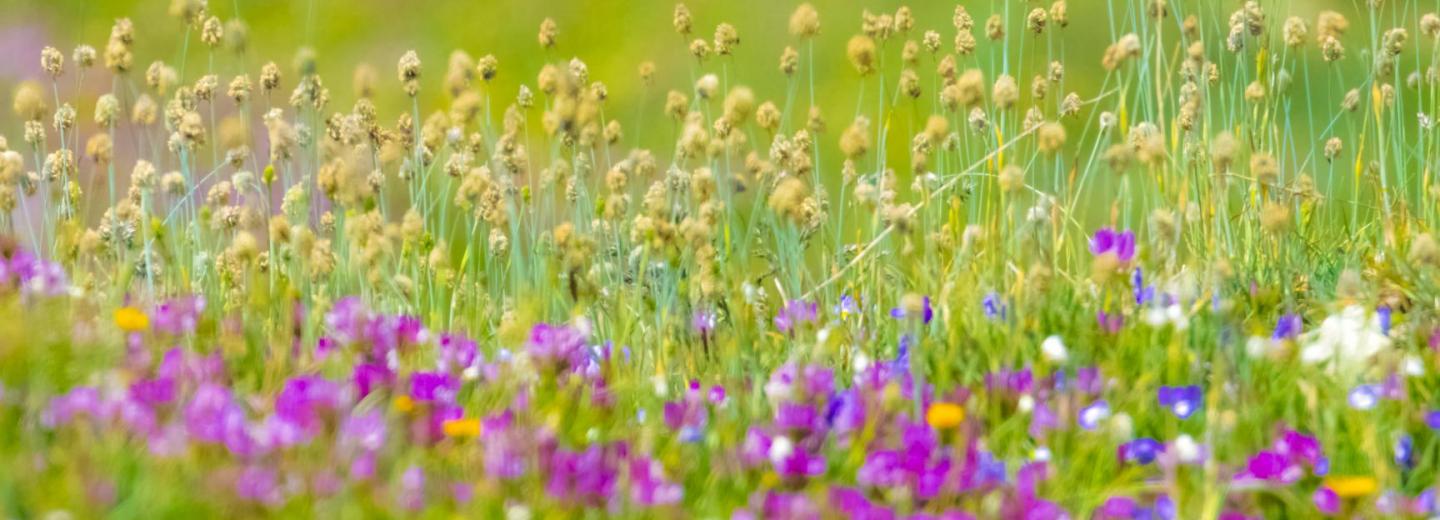The grasslands are formations of herbaceous vegetation typical of steep rocky slopes; sunny, dry, with thin permeable soil, where mostly gramineae and a few dicotyledons grow; they are rather frequent in the park, mainly on the Val d'Aosta side, they are found at relatively low altitude, and are not used by humans except in rare cases for generally ovine pastures.
Pasturing fields are generally herbaceous formations whose floral composition is heavily conditioned by agricultural activity. In fact, here there is production of forage through mowing, followed by direct cattle pasturing in the same growing season; there is also frequent irrigation and organic fertilizing. These meadows, common in the park’s territory near inhabited areas of the mountains, are characterized by a dense continuous herbaceous cover with a remarkable variety of species, not only gramineae but also dicotyledons.
The highland or mountain pastures are very common in the park. In fact they occupy every area above the timberline in which the terrain is covered with herbaceous vegetation which is more or less continuous when not interrupted by rocks. The floral composition is rather variable and conditioned by the nature of the substrate and by the altitude. In general, the plants in these environments are well adapted to the brief growing period, to the harshness of the climate and to the lean ground, since low temperatures slow down the plants' biological activity and reduce the fertility of the soil. Tough leaves, reduced size and slow growth, allow these species to survive the harsh weather conditions of the mountains. The flowers of the alpine pastures are generally very large and brightly coloured to attract rare pollen-carrying insects.
The snowy valleys are environments typical of the sub-alpine area, and are common in the park’s territory. They are areas of ground which remain snow-covered for most of the year, leaving the ground bare for only a short period (1 - 3 months at most). The plants that grow here must be able to run through their flowering-cycle in a very short time. The flora of the snowy valleys is influenced by the type of substrate (limestone or silicon), but is generally composed of dwarf willows and dicotyledons: these plants form a thin carpet a few centimetres high. Strangely enough, some species that are sensitive to low temperatures, such as dwarf willows, find refuge in the snowy valleys; in fact, the ground is protected by the snow for most of the year and is uncovered only in the hottest months.
